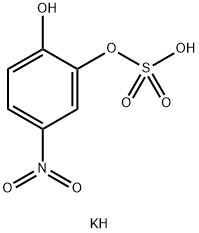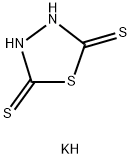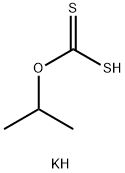Potassium hydride
- CAS NO.:7693-26-7
- Empirical Formula: HK
- Molecular Weight: 40.11
- MDL number: MFCD00011357
- EINECS: 231-704-8
- SAFETY DATA SHEET (SDS)
- Update Date: 2024-12-18 14:15:30

What is Potassium hydride?
Chemical properties
Potassium hydride is available in laboratory quantities only as a 20 – 35 % dispersion in oil. Potassium hydride is a considerably stronger base than lithium hydride or sodium hydride. It is able to remove protons from tertiary alcohols and ketones, a reaction that either does not occur or is very slow when sodium hydride is used. Potassium hydride also reacts with weak Lewis acids, converting sterically hindered boron trialkyls to the corresponding sterically hindered complex borohydrides:
The Uses of Potassium hydride
Potassium Hydride is used in preparation of Hydroxy-Xanthone derivatives via Isoprenylation followed by Claisen rearrangement starting from Fluoroxanthone derivatives.
The Uses of Potassium hydride
Organic condensations and alkylations.
The Uses of Potassium hydride
It is used as a strong reducing agent and inmaking super bases RNHK and ROK(whereRis an alkyl group) (Sullivan andWade 1980).It is sold as 35 wt% dispersion in mineral oil.
Definition
potassium hydride: A white orgreyish white crystalline solid, KH;r.d. 1.43–1.47. It is prepared by passinghydrogen over heated potassiumand marketed as a light grey powderdispersed in oil. The solid decomposeson heating and in contact withmoisture and is an excellent reducingagent. Potassium hydride is a firehazard because it produces hydrogenon reaction with water.
Reactions
Potassium hydride acts as a base and as hydride donor. It is used for deprotonation, cyclization-condensation, elimination, and rearrangement reactions, and also as a reducing agent. Potassium hydride undergoes reaction quickly and quantitatively with acids, and of particular note is its capability to rapidly deprotonate tertiary alcohols where sodium hydride or potassium metal do so slowly or not at all. The reactions of metal hydrides take place at the crystal surface. The crystal lattice energies decrease from lithium to cesium hydride, and potassium hydride appears to have the optimal lattice energy and hydride radius for surface reactions. The presence of 18-crown-6 enhances the reactivity of potassium hydride, The crown ether can operate as a phase-transfer agent or as a simple “pickling” agent of the potassium hydride surface, dissolving the formed inorganic salts. Potassium hydride is usually superior to lithium and sodium hydride in the reactions. Unusually active potassium hydride can be prepared easily from hydrogen and superbasic reagents (t-BuOK-TMEDA) in hexane. “Superactive potassium hydride” is very active in deprotonation as well as in reduction. The reactivity of commercially available potassium hydride, which is prepared by the reaction of hydrogen gas with elemental potassium, depends upon the impurities in different lots (mainly potassium or its reaction products), thus leading to side reactions and variable yields. The superactive metal hydride contains no alkali metal.
General Description
This product has been enhanced for energy efficiency.
Hazard
Dangerous fire and explosion risk, evolves toxic and flammable gases on heating and on expo- sure to moisture.
Health Hazard
Potassium hydride react with the moisture on skin and other tissues to form highly corrosive sodium and potassium hydroxide. Contact of these hydrides with the skin, eyes, or mucous membranes causes severe burns; thermal burns may also occur due to ignition of the liberated hydrogen gas.
Health Hazard
The toxicity data on potassium hydride arenot reported in the literature. In the pure state, this compound should be highly corrosiveby inhalation, ingestion, and skin contact.It yields potassium hydroxide, whichis also very corrosive, when reacted withmoisture.
Fire Hazard
Potassium hydride is flammable solid that ignite on contact with moist air. Potassium hydride presents a more serious fire hazard than sodium hydride. The mineral oil dispersions do not ignite spontaneously on exposure to the atmosphere. Sodium hydride and potassium hydride fires must be extinguished with a class D dry chemical extinguisher or by the use of sand, ground limestone, dry clay or graphite, or "Met-L-X ? " type solids. Water or CO 2 extinguishers must never be used on sodium and potassium hydride fires.
Flammability and Explosibility
Potassium hydride and sodium hydride are flammable solids that ignite on contact with moist air. Potassium hydride presents a more serious fire hazard than sodium hydride. The mineral oil dispersions do not ignite spontaneously on exposure to the atmosphere. Sodium hydride and potassium hydride fires must be extinguished with a class D dry chemical extinguisher or by the use of sand, ground limestone, dry clay or graphite, or "Met-L-X?" type solids. Water or CO2 extinguishers must never be used on sodium and potassium hydride fires.
Safety Profile
Dangerous fire hazard by chemical reaction. Ignites spontaneously in air. Moderate explosion hazard when exposed to heat or by chemical reaction. Wdl react with water, steam, or acids to produce H2 which then igmtes. Can react vigorously with oxidizing materials. To fight fire, use CO2, dry chemical. Potentially explosive reactions with 0-2,4- dnitrophenylhydroxylamine, fluoroalkenes. Ignites on contact with air, oxygen + moisture, fluorine. Incompatible with Cl2, acetic acid, acrolein, acrylonitrile, (CaC + Cl2), ClO2, (H202 + Cl2), (CHFL + CH,OH), 1,2-dchloroethylene, maleic anhydride, (n-methyl-n-nitrosourea + CH2Cl2), nitroethane, NCb, nitromethane, nitroparaffins, o-nitrophenol, nitropropane, n-nitrosomethylurea, (nitrosomethylurea + CH2Cl2), H20, trichloroethylene, tetrahydrofuran, tetrachlorethane. When heated to decomposition it emits highly toxic fumes of K2O. See also POTASSIUM and HYDRIDES.
storage
Safety glasses, impermeable gloves, and a fire-retardant laboratory coat should be worn at all times when working with these substances. These hydrides should be used only in areas free of ignition sources and should be stored preferably as mineral oil dispersions under an inert gas such as argon.
Incompatibilities
Potassium hydride and sodium hydride react violently with water, liberating hydrogen, which can ignite. Oil dispersions of these hydrides are much safer to handle because the mineral oil serves as a barrier to moisture and air. Potassium hydride may react violently with oxygen, CO, dimethyl sulfoxide, alcohols, and acids. Explosions can result from contact of these compounds with strong oxidizers. Potassium hydride is generally more reactive than sodium hydride.
Waste Disposal
Excess potassium or sodium hydride and waste material containing these substances should be placed in an appropriate container under an inert atmosphere, clearly labeled, and handled according to your institution's waste disposal guidelines. Experienced personnel can destroy small quantities of sodium hydride and potassium hydride by the careful dropwise addition of t-butanol or iso-propanol to a suspension of the metal hydride in an inert solvent such as toluene under an inert atmosphere such as argon. Great care must be taken in the destruction of potassium hydride because of its greater reactivity. The resulting mixture of metal alkoxide should be placed in an appropriate container, clearly labeled, and handled according to your institution's waste disposal guidelines.
Properties of Potassium hydride
| Melting point: | decomposes [CRC10] |
| Boiling point: | 316 °C |
| Density | 1.54 |
| Flash point: | 113 °C |
| storage temp. | Flammables + water-Freezer (-20°C)e area |
| solubility | Insoluble in benzene, diethyl ether and carbon disulfide. |
| appearance | Colorless crystals |
| form | dispersion (in mineral oil (~35%)) |
| color | Grayish beige |
| Water Solubility | decomposed by H2O [CRC10] |
| Sensitive | Moisture Sensitive |
| EPA Substance Registry System | Potassium hydride (KH) (7693-26-7) |
Safety information for Potassium hydride
| Signal word | Danger |
| Pictogram(s) |
 Flame Flammables GHS02  Corrosion Corrosives GHS05 |
| GHS Hazard Statements |
H260:Substances And Mixtures Which, In Contact With Water,Emit Flammable Gases H314:Skin corrosion/irritation |
| Precautionary Statement Codes |
P223:Keep away from any possible contact with water, because of violent reaction and possible flash fire. P280:Wear protective gloves/protective clothing/eye protection/face protection. P231+P232:Handle under inert gas. Protect from moisture. P303+P361+P353:IF ON SKIN (or hair): Remove/Take off Immediately all contaminated clothing. Rinse SKIN with water/shower. P305+P351+P338:IF IN EYES: Rinse cautiously with water for several minutes. Remove contact lenses, if present and easy to do. Continuerinsing. |
Computed Descriptors for Potassium hydride
| InChIKey | NTTOTNSKUYCDAV-UHFFFAOYSA-N |
New Products
Tert-butyl bis(2-chloroethyl)carbamate (S)-3-Aminobutanenitrile hydrochloride N-Boc-D-alaninol N-BOC-D/L-ALANINOL N-octanoyl benzotriazole 4-Hydrazinobenzoic acid 3,4-Dibenzyloxybenzaldehyde 1,1’-CARBONYLDIIMIDAZOLE R-2-BENZYLOXY PROPIONIC ACID 1,1’-CARBONYLDI (1,2-4 TRIAZOLE) 4-HYDROXY BENZYL ALCOHOL 3-NITRO-2-METHYL ANILINE (2-Hydroxyphenyl)acetonitrile 4-Bromopyrazole 5-BROMO-2CYANO PYRIDINE 5,6-Dimethoxyindanone 5-broMo-2-chloro-N-cyclopentylpyriMidin-4-aMine 4-methoxy-3,5-dinitropyridine 2-(Cyanocyclohexyl)acetic acid 2-aminopropyl benzoate hydrochloride 1-(4-(aminomethyl)benzyl)urea hydrochloride tert-butyl 4- (ureidomethyl)benzylcarbamate diethyl 2-(2-((tertbutoxycarbonyl)amino) ethyl)malonate Ethyl-2-chloro((4-methoxyphenyl)hydrazono)acetateRelated products of tetrahydrofuran








You may like
-
 7693-26-7 POTASSIUM HYDRIDE 99%View Details
7693-26-7 POTASSIUM HYDRIDE 99%View Details
7693-26-7 -
 Potassium hydride CAS 7693-26-7View Details
Potassium hydride CAS 7693-26-7View Details
7693-26-7 -
 Potassium hydride CAS 7693-26-7View Details
Potassium hydride CAS 7693-26-7View Details
7693-26-7 -
 55441-95-7 99%View Details
55441-95-7 99%View Details
55441-95-7 -
 N-Vinylformamide 99%View Details
N-Vinylformamide 99%View Details
13162-05-5 -
 Chloro Uracil 1820-81-1 99%View Details
Chloro Uracil 1820-81-1 99%View Details
1820-81-1 -
 2-ethyl-6-methyl-3-hydroxypyridine succinate 99%View Details
2-ethyl-6-methyl-3-hydroxypyridine succinate 99%View Details
127464-43-1 -
 2-ETHYLPYRIDINE 100-71-0 99%View Details
2-ETHYLPYRIDINE 100-71-0 99%View Details
100-71-0